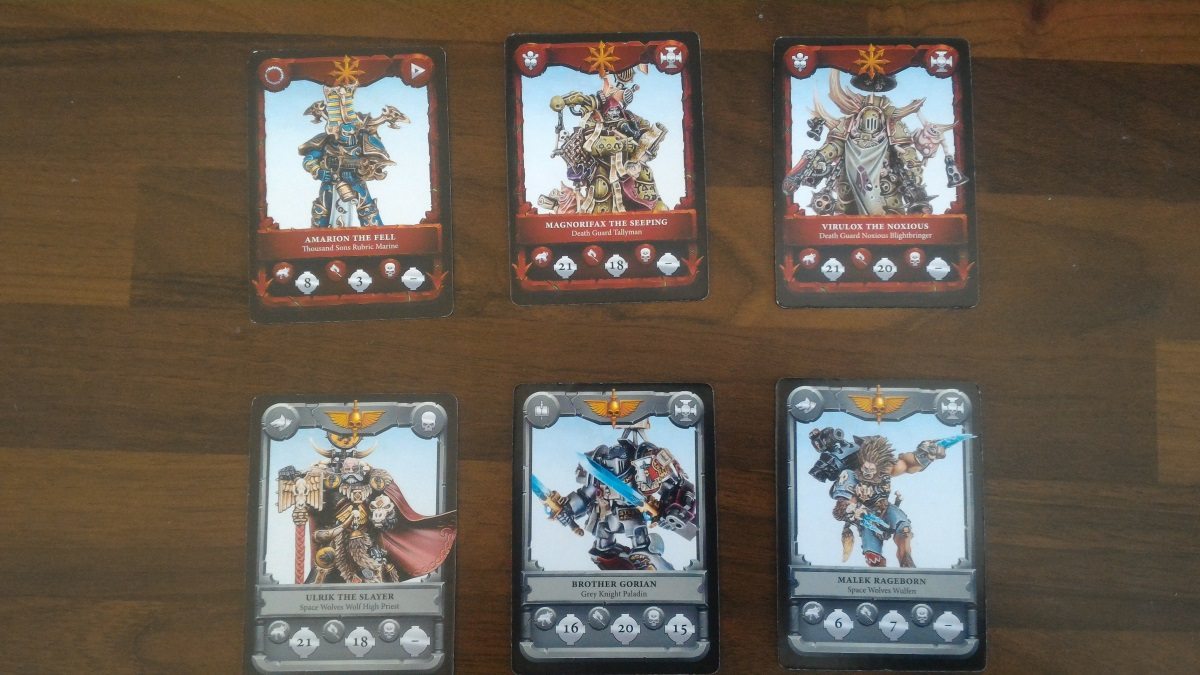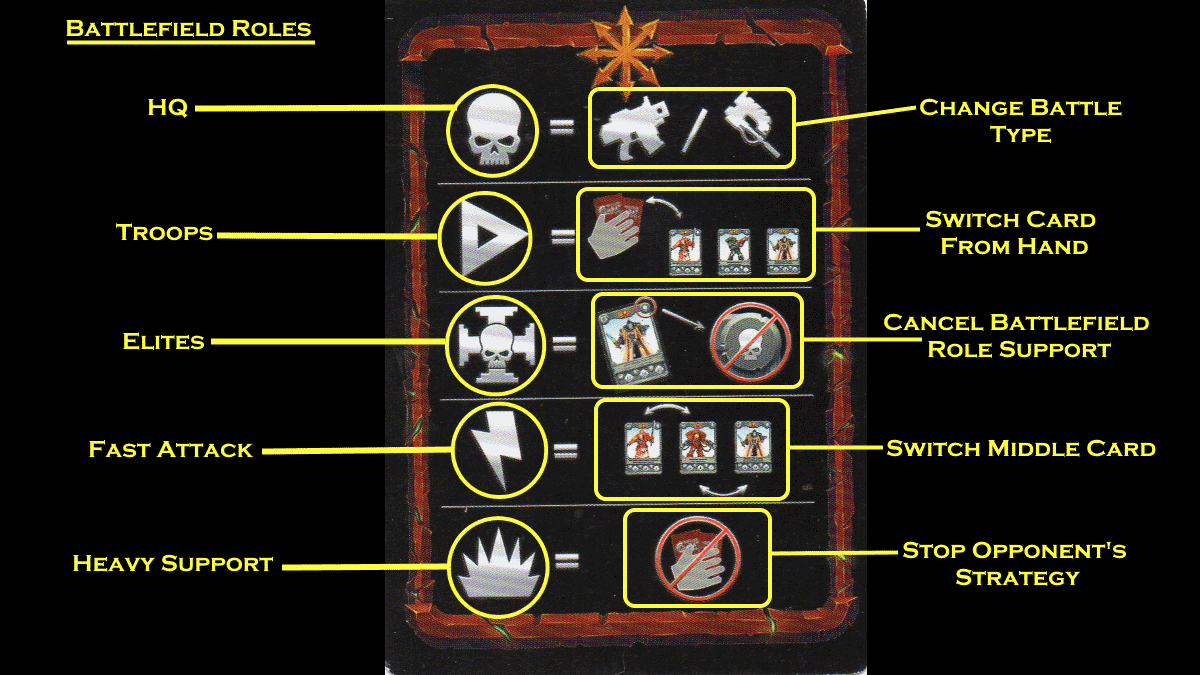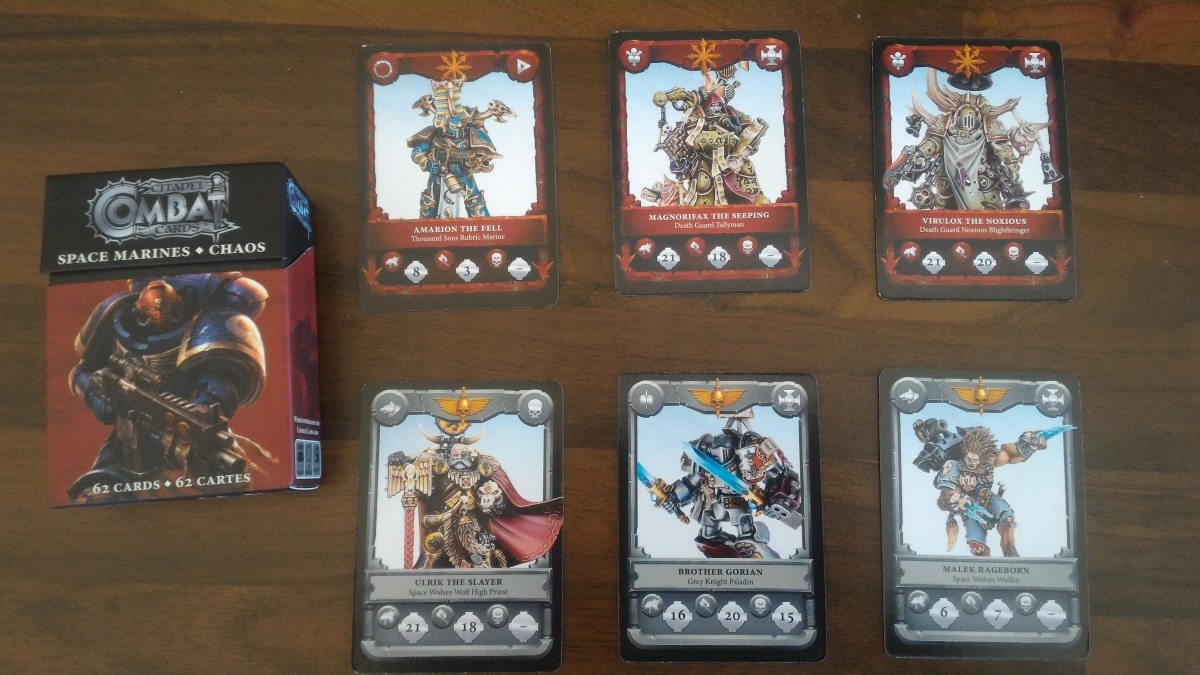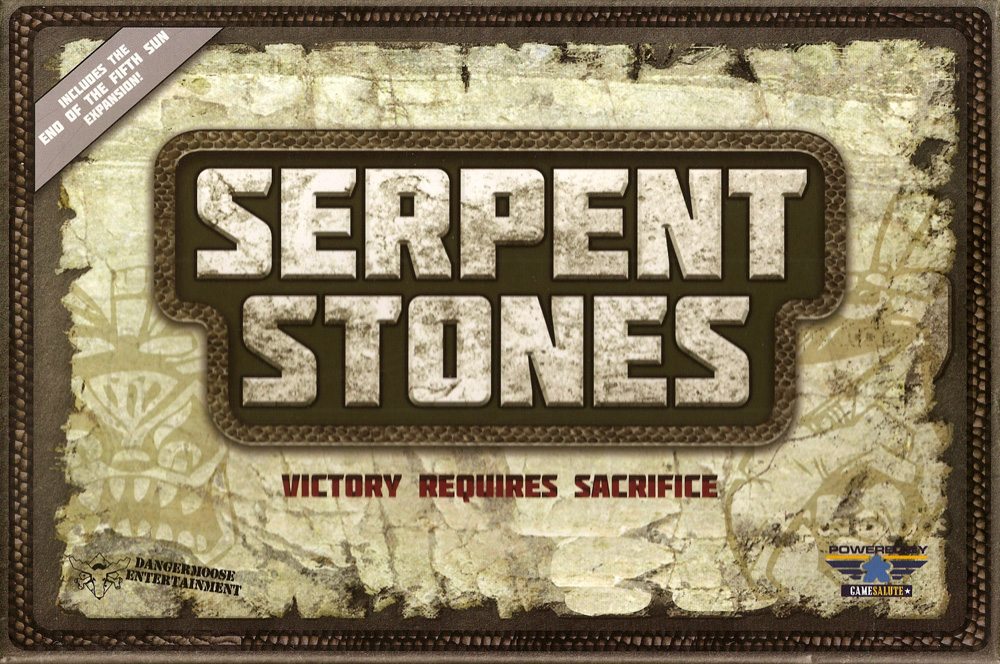Many moons ago, Games Workshop made a little add-on product called Combat Cards. These were essentially Warhammer Top Trumps. Each card had a number of wargamey statistics and you called one out. If it was higher than your opponent’s corresponding stat, you won the card, if it was lower, you lost. The best thing about them was probably the photo of the Citadel Miniature found on each card.
Games Workshop is having a purple patch at the moment, with new products seemingly released or announced daily. This includes the reinvention of the Combat Card! Yes, Citadel Combat Cards are back, and this time they’re a half-decent game!
What is Citadel Combat Cards?
It’s a small box game, that, unlike most GW games, you can play in about 20 minutes, and only needs a small flat surface. This first Combat Card iteration is from the Warhammer 40,000 universe, featuring two armies, Space Marines and Chaos. It’s a game for 2 players, suitable for ages 8 and up. It’s a deck of cards costing £10 in the UK and $15 in the US.
Each army comprises half the deck: 30 each, from a total of 60 cards. (The box also contains an additional pair of summary cards, one for each player.) Games last for 6 rounds, each utilizing 5 cards. Like the old version of the game, you’re still trying to outscore your opponent and defeat their cards. This modern upgrade, though, has a modicum of tactics. The game has two versions, one slightly more complicated than the other.
Once again, the artwork is one of the game’s key draws. Each card has a stunningly painted Citadel miniature on it. The game is a massive advertisement of the possibilities of paint, or, for us hobby mortals, the impossibility of painting that well.

How do you play Citadel Combat Cards?
In its simplest form, the game is Top Trumps with added tactics.
- Games last 6 rounds.
- One player is designated the “Attacker” and the other the “Defender.” This will switch after each round. Both players will be attacker and defender 3 times.
- Each player takes their deck of 30 cards and shuffles them.
- In a given round, players draw their top five cards, choose three they want to use, and discard the other two.
- Both players lay their remaining cards face down in front of them.
- The cards are placed across from one another to form two rows of three.
- The ensuing battle will be resolved left to right from the attacker’s perspective.
- When both players have placed their cards they are flipped face up.
- Starting with the attacker’s leftmost and the defender’s rightmost card, the battles are resolved.
- The attacker chooses the stat used to resolve the first battle.
- The stats are:
- Shooting
- Combat
- Psychic
- Whichever card has the highest value for the chosen stat, wins. The owner of that card takes his opponent’s defeated card and places it in his victory pile.
- The second combat is resolved in the same way (this time the defender will choose which stat is used). Then the third combat (with the attacker choosing).
- The attacker and defender designation switches and play continues. Another round begins with the drawing of another 5 cards.
- Play continues until all the cards are gone (6 rounds)
- Whoever has the most cards in their victory pile at the end of the game is the the winner.
That is the bare essence of the game but even the simple version is a little more complex than that.
What are the symbols on the top of the cards?

So far, I haven’t mentioned the symbols on the tops of the cards. There are two on each card. One (the one on the left) is the Faction Symbol, the other (on the right) is the Battlefield Role.
The decks have cards with various (5) different battlefield roles and faction types, and in Combat Cards, it’s good to play similar cards together. When you have laid out your force of three cards, any matching symbols will give a +10 stat boost when resolving combat. This gives a potential bonus of +40, enough to win almost any battle. Note: Card with the “HQ” battlefield role can match with any other role type, so are very powerful.
Now the choice of which three cards to pick, from your five, becomes a little more nuanced. Synergies between cards might beat raw strength. It is also important to remember that if a card is defeated it is removed, so it won’t be able to lend support in later battles. As a general rule, it is best to put your best matching card in the last battle.
And that is the basic game. A straight opposing score game, with a slim tactical element. It won’t rock your world, but it’s thematically sound and a fun way to introduce younger players to the Warhammer 40,000 univerese.
What are the Citadel Combat Cards advanced rules?
If you want to step up the complexity of the game a little, there are further advanced rules.

These relate to the unit type symbols and the remaining two unchosen cards from each hand of five. After an attack has been declared, but before it’s been resolved, players can use the unit type of one of their unplayed cards to affect the outcome of the battle. These are called “Strategies.” Note: This means that of the three battles in each turn, each player will only be able to use a strategy in two of them.
Strategies add an interesting tactical variation in the game. Particularly, those that change the type of battle or prevent Battlefield Role synergies from occurring. These can swing the tide of a battle. Trying to hold everything in your head at this point can be a bit of challenge!
These additional rules take the game a little deeper, though it is still only ever going to be a filler.
Should You Buy Citadel Combat Cards?
This really depends on what you’re looking for. $15 for a complete game from Games Workshop is almost unheard of. Of course, there are no minis, but there is some gorgeous artwork.
The game is, by necessity, simple. It’s quick and easy to play; an excellent introduction to the hobby. You’re never going to meet up to play it, but if you have a bit of time between sessions, are on the move, or on your lunch break, it’s an excellent way to pass twenty minutes.
The tactical complexities of the game won’t be troubling Magnus Carlsen anytime soon, but they’re fun and engaging for younger players. All in all, “a tenner,” as we say in my part of the world, is pretty good value for a fun game that looks great and fits neatly in your pocket.
Click here to see all our tabletop game reviews.
If you’d like to stay up-to-date with all of our tabletop gaming coverage, please copy this link and add it to your RSS reader.
Disclosure: I was sent a box of Citadel Combat Cards by Games Workshop to write this review.





